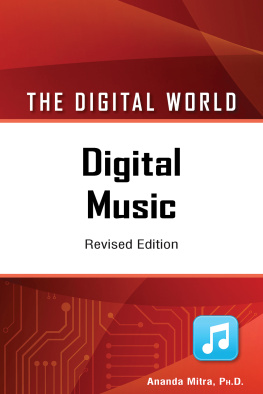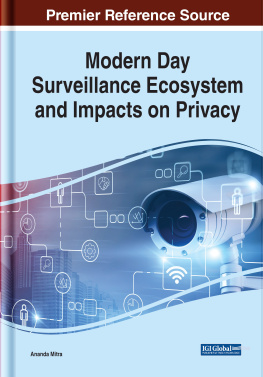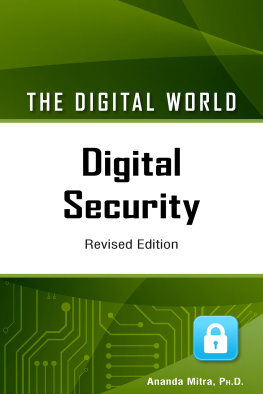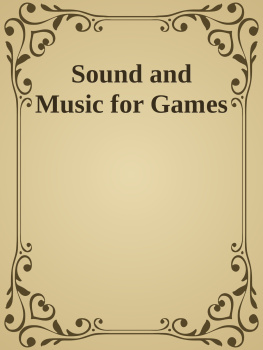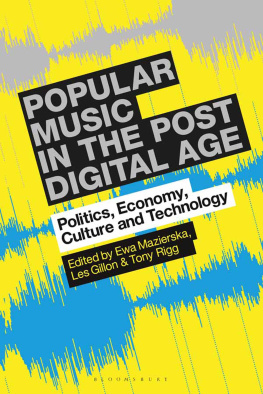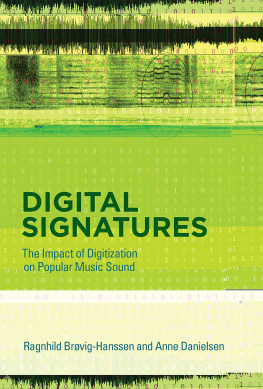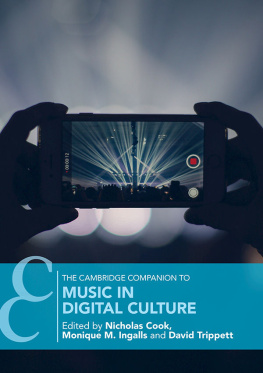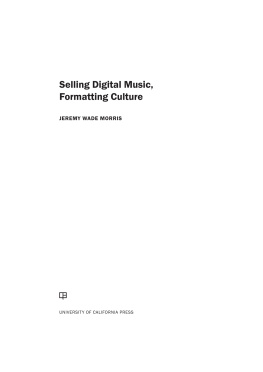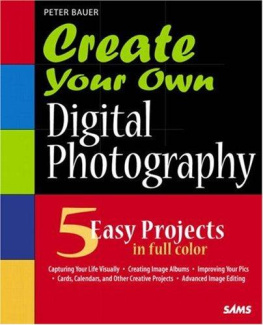Digital Music, Revised Edition
Copyright 2020 by Infobase
All rights reserved. No part of this publication may be reproduced or utilized in any form or by any means, electronic or mechanical, including photocopying, recording, or by any information storage or retrieval systems, without permission in writing from the publisher. For more information, contact:
Chelsea House
An imprint of Infobase
132 West 31st Street
New York NY 10001
ISBN 978-1-4381-8268-1
You can find Chelsea House on the World Wide Web
at http://www.infobase.com
Chapters
Basics of Sound
Digital music makes up one of the most important parts of the digital world. Compact discs (CDs), digital music players like iPods, Internet radio stations, and podcasts are used by millions of people. In fact, the iPod has become one of the most popular electronic gadgets, seen everywhere from airports to school classrooms. In the past, CD players were all the rage and were used by people in every age group, from the very young to the elderly. Today, digital streaming devices have taken over as the medium of choice for listening to music. Seeing people with earphones listening to digital music has become a common sight. Digital sound is also used in home appliances, such as talking toasters, and for sending voice commands on the telephone. Listening to digital sound is the first step toward appreciating its complex world. The next step is gaining information.
Sound is made up of traveling vibrations, just like waves that travel across still water when the water is disturbed. When a pebble falls into a still pond, it creates waves that move outward from the place where the pebble fell into the water. The waves are large at the point where the pebble is dropped and become smaller as they move out from that spot, until they eventually disappear.
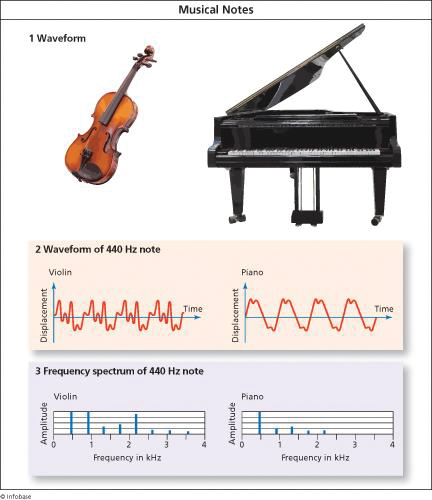
Musical instruments produce a fundamental frequency together with a series of overtones at lower amplitudes. The number and amplitudes of the overtones determine the quality of the sound and are specific to the particular instrument, thus middle C on a violin will sound different in tone (but not in pitch) from the same note when played on a piano.
Source: Infobase.
Sound behaves in a similar fashion. As the Columbia Encyclopedia on Physics explains, "When a body vibrates, or moves back and forth, the oscillation [back-and-forth movement] causes a periodic disturbance of the surrounding air or other medium that radiates outward in straight lines in the form of a pressure wave. The effect these waves produce upon the ear is perceived as sound." Vibrations produced by gadgets such as a loudspeaker produce sound waves similar to the waves in water. Loudspeaker vibrations cause pressure differences in the surrounding air as they travel. These pressure differences cause sound sensors such as the eardrum to vibrate, which is interpreted by the brain as the sound produced by the loudspeaker. Sound only exists when there are vibrations in a medium such as air, and sound can be heard only when there is something to detect the vibrations.
This chapter describes the way in which sound vibrations are changed into digital information that can be manipulated by computers. We will also look at the process of digitization that makes sound waves into digital files, which can then be treated in the same way as any other digital data.
How Sound is Produced
Sound can be produced by any system that is capable of causing vibrations in a medium. For example, there are natural sources of sound wherein the vibrations are produced without any human involvement, such as leaves that rustle when wind blows through the trees. Similarly, a falling object might make a "thud" sound because the impact vibrates the surrounding air. These are situations in which forces of nature cause uncontrolled vibrations that produce ambient sound, also known as background noise.
The most complex nature of the sound process is seen in the use of language among humans. Human beings have developed the ability to control sound in a very careful manner, and this has led to the development of numerous languages. Researchers who study speech have pointed out that the English language is made up of about 40 different kinds of phonemes, which represent the different kinds of sounds that a person has to produce to create English words. Phonemes are the smallest units of speech that serve to distinguish one utterance from another in a language or dialect; for instance, the m in the word mat and the b in bat.
Other languages might have fewer or more phonemes, as suggested by linguists Morton W. Bloomfield and Leonard Newmark in their 1963 book, A Linguistic Introduction to the History of English. According to Bloomfield and Newmark, "The number of phonemes in historical languages seems to range somewhere between 15 and 90." Humans get accustomed to producing the sounds related to specific languages. Other animals, such as dolphins, can also create sounds that appear to have patterns similar to human languages.
Sound is also produced with tools such as musical instruments, which create specific vibrations in air. A drum produces sound when a person vibrates the stretched leather with his or her hands or a drumstick. Instruments such as the acoustic guitar produce various sounds according to specific string movement. An electric guitar uses an amplifier to produce the sound that is heard since the sound of the string is barely audible by itself. The amplifier on the electric guitar creates the sound by electronically converting the guitar's string vibrations and making them powerful enough to be heard through a loudspeaker. Sounds produced by instruments are usually controlled by a person who has the skills to use an instrument to create vibrations that would sound pleasing to the human ear. The vibrations are eventually picked up by the human ear and one can hear the sound being produced by the instrument.
Sound Waves
Physicists have shown that sound is a form of wave that travels through a medium, causing the medium to vibrate. As in the case of any other waves, sound waves can be represented by amplitude and frequency. Amplitude refers to the strength of the wavethe taller the wave, the higher its amplitude. The strength of sound waves is measured by a unit called the decibel in honor of the physicist Alexander Graham Bell, who was a pioneer in examining the physics of sound. If a sound's decibel level is extremely high, the waves could be so strong that objects being vibrated can be damaged by the sound waves. An eardrum can rupture if a loud noise is produced too close to it. The American Occupational Safety and Health Administration (OSHA) puts a limit on the loudness of a sound to which a factory worker can be exposed. OSHA recommends that workers not be exposed to a continuous sound louder than 90 decibels (the equivalent of a police whistle, heavy traffic, average volume of earphones, some motorcycles at 25 feet (7.6 meters), shouted conversation).
The next characteristic of the sound wave is its frequency, or how fast its vibration moves. Frequency is measured as a number of vibrations per second. This unit of measurement is called a hertz. The scale honors the German physicist Heinrich Rudolf Hertz, who did pioneering work in examining the nature of waves in the late 1800s. Waves of the same frequency sound the same to the human ear. The note "middle C" played on any musical instrument sounds the same because it has a frequency of 262 hertz, which means the eardrum vibrates 262 times per second. The middle C is the first note that piano students are taught to play. In the case of a normal human ear, the frequency range that a person can interpret as sound ranges from 20 hertz to 20,000 hertz. Other animals might be able to hear larger or smaller frequency ranges. For example, a dog is able to hear sounds of up to 100,000 hertz, making it possible to make whistles that produce sound at a frequency only dogs can hear.

